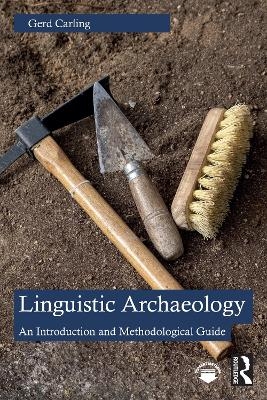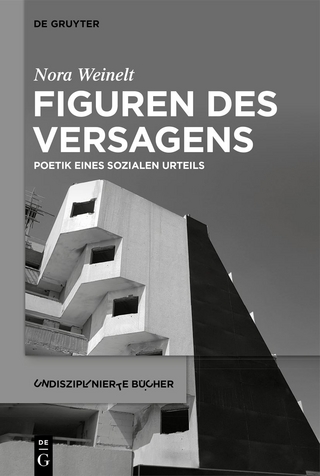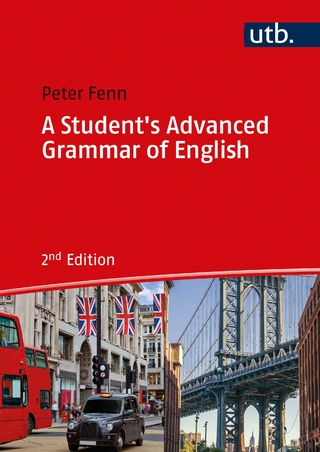
Linguistic Archaeology
Routledge (Verlag)
978-1-032-27176-7 (ISBN)
The book introduces the field’s expansion out of traditional approaches to focus more on the interplay of related disciplines and the reconstruction of human language beyond the written period. The opening chapter outlines key theories and charts their development from the nineteenth century through to today, drawing on work from computational historical linguistics, phylogenetics, and linguistic anthropology. Subsequent chapters build on theory to take a hands-on approach in mining empirical data in the process of reconstructing language prehistory, including references, links, and instructions to open access resources, and offering a step-by-step guide for employing the rich range of available methods in working with this data. Closing chapters situate theory and method in context against chronological and geographic perspectives and look ahead to future trajectories for continued progress in this emerging area of study.
Offering a holistic entry point into linguistic archaeology, this innovative volume will be a helpful resource for students in historical linguistics, linguistic anthropology, language evolution, and cultural geography.
Gerd Carling is Professor of Empirical Linguistics at Goethe University, Frankfurt am Main, Germany.
Acknowledgements
1. Setting the field: what is linguistic archaeology?
1.1. What is linguistic archaeology?
1.2. Defining the field: an overview of the content and organization of this book
1.3. Theoretical preconditions for reconstructing language prehistory
1.3.1. Placing language reconstruction in the discipline of general linguistics
1.3.2. Controversies on the nature and origin of human language
1.4. Core concepts in models and methods of language reconstruction
1.4.1. Defining and explaining pattern similarity
1.4.2. The tree and wave models
1.4.3. Family-based and deep reconstruction: ancestral nodes, proto-languages, and early language
Further reading
2. Basics: Structures and components of human language
2.1. Phonemes: the smallest units of speech
2.2. Words and word classes
2.3. Morphemes: the smallest meaning-bearing unit of a language
2.4. How words are glued together in grammar
Further reading
3. The diversity and origin of human language
3.1. Linguistic diversity and language population size
3.2. Origin of human language: why, when, and how?
3.3. How to investigate linguistic diversity
Further reading
4. The comparative method
4.1. Basics of the comparative method
4.1.1. The comparative method and language classification
4.1.2. The problem of etymology and semantic change
4.1.3. Reconstructing grammar by the comparative method
Further reading
4.2. Philology
4.2.1. Understanding the nature of writing and interpreting writing systems
4.2.2. Interpreting the linguistic value of writing
4.2.3. Understanding the meaning of words and texts
Further reading
Useful resources
4.3. Historical linguistics
4.3.1. Historical linguistics: using the comparative method to observe language change
4.3.2. Sound change
4.3.3. Reconstructing lexical change: replacement, meaning change, and borrowing
4.3.4. Analogy
4.3.4. Grammaticalization
Further reading
Useful resources
5. The typological method
5.1. Basics of the typological method
Further reading
Useful resources
5.2. Data mining for typology: language documentation
Further reading
Useful resources
5.3. Applying the typological method
5.3.1. Reconstructing early language
Further reading
5.3.2. Observing the evolution of language types
Further reading
5.3.3. Diachronic typology: reconstructing the typology of proto-languages
Further reading
6. The phylogenetic method
6.1. Phylogenetic and computational methods: a survey
Further reading
6.2. Data mining for phylogenetic methods
Useful resources
6.3. Reconstruction of features of grammar, syntax, and phonology
Further reading
7. Archaeolinguistics: words, artefacts, and ancient DNA
7.1. Basics of the archaeolinguistic approach
7.2. Methods in archaeolinguistic approach
7.2.1. Reconstructing the vocabulary of a proto-language
Further reading
7.2.2. Reconstructing the culture and beliefs of proto-language communities through language
Further reading
7.2.3. Reconstructing language contact and substrate influence
7.3. Connecting reconstructed language to archaeology, ancient DNA, and prehistoric migrations
Further reading
8. Linguistic anthropology: relativist approaches to reconstructing language prehistory
8.1. The linguistic relativity approach: reconstructing diversity
8.2. Methods in linguistic relativity research
8.2.1. Observing small-scale societies
8.2.3. Designing experiments and stimuli for observing diversity of language-cognition-culture
8.3. Contrasting results of small-scale societies cross-linguistically
Further reading
9. The cultural evolutionary approach
9.1. Overview of the cross-disciplinary field of cultural evolution
9.2. Methodologies of the cultural evolutionary approach
9.2.1. Data design and base concepts for compiling data
9.2.2. Models and methods: phylogenetic inference
9.2.3. Models and methods: experimental design
9.3. Triangulation
Further reading
10. Conclusion: linguistic archaeology in the past, present, and future
Bibliography
Index
| Erscheinungsdatum | 20.04.2024 |
|---|---|
| Zusatzinfo | 54 Tables, black and white; 25 Line drawings, black and white; 15 Halftones, black and white; 40 Illustrations, black and white |
| Verlagsort | London |
| Sprache | englisch |
| Maße | 152 x 229 mm |
| Gewicht | 367 g |
| Themenwelt | Geisteswissenschaften ► Archäologie |
| Geisteswissenschaften ► Sprach- / Literaturwissenschaft ► Anglistik / Amerikanistik | |
| Geisteswissenschaften ► Sprach- / Literaturwissenschaft ► Literaturwissenschaft | |
| Geisteswissenschaften ► Sprach- / Literaturwissenschaft ► Sprachwissenschaft | |
| Naturwissenschaften ► Geowissenschaften ► Geografie / Kartografie | |
| ISBN-10 | 1-032-27176-0 / 1032271760 |
| ISBN-13 | 978-1-032-27176-7 / 9781032271767 |
| Zustand | Neuware |
| Informationen gemäß Produktsicherheitsverordnung (GPSR) | |
| Haben Sie eine Frage zum Produkt? |
aus dem Bereich


